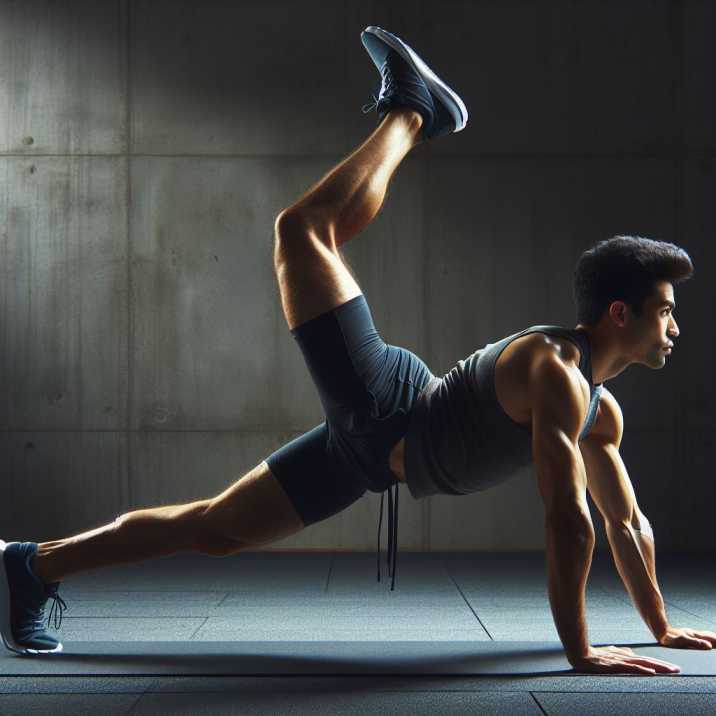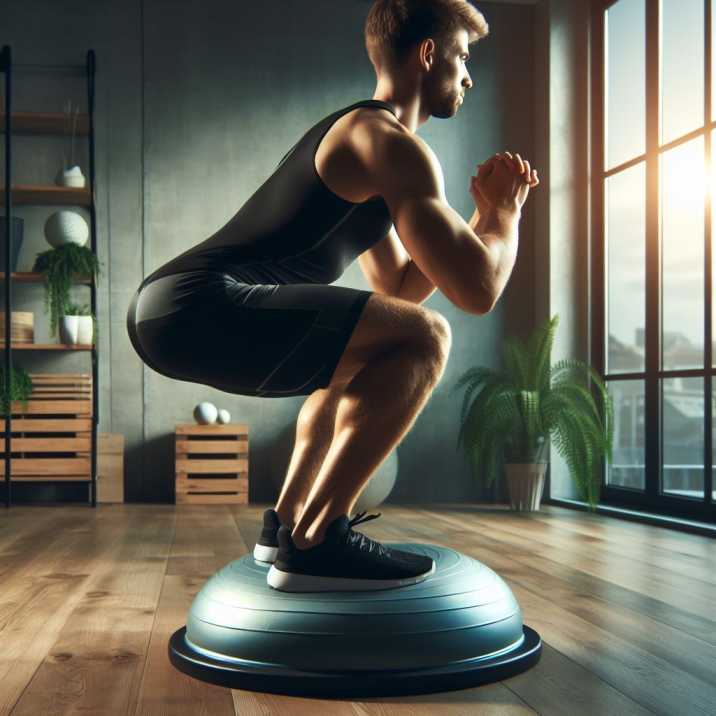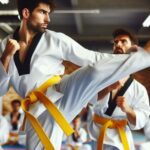Introduction:
Table of Contents
Balancing Exercises for Developing Martial Arts Leadership Skills
In the realm of martial arts, mastering physical techniques is just one aspect of becoming a true leader. The ability to balance effectively, both physically and mentally, is paramount for those aspiring to lead within their martial arts community. Balancing exercises not only enhance stability and coordination but also cultivate the mental fortitude necessary for leadership roles. In this article, we’ll delve into 10 balancing exercises for developing martial arts leadership skills, offering a comprehensive guide for practitioners seeking to elevate their capabilities.
The Tree Pose:
Originating from yoga, the Tree Pose is a fundamental balancing exercise that strengthens the legs and core while promoting focus and stability. Begin by standing tall with feet together, then shift your weight onto one leg while lifting the other foot to rest on the inner thigh or calf of the supporting leg. Extend your arms overhead or maintain them in prayer position at your chest. Hold the pose for 30 seconds to a minute, then switch sides. Repeat for several sets to improve balance and concentration.
One-Legged Stance:
This simple yet effective exercise is performed by standing on one leg while lifting the other leg slightly off the ground. Maintain a straight posture with the lifted leg either bent at the knee or extended forward. Focus on engaging the core muscles to stabilize your body and hold the position for 30 seconds to a minute before switching legs. Gradually increase the duration as your balance improves, aiming for multiple sets on each leg.
Balancing Board:
A balancing board is a versatile tool that challenges stability and proprioception. Stand on the board with feet hip-width apart and engage your core muscles to maintain balance as the board tilts from side to side or front to back. Start with small movements and gradually increase the range of motion as you gain confidence. Incorporate variations such as squats or arm movements to further enhance coordination and strength.
Tightrope Walk:
Imagining a tightrope beneath your feet, walk in a straight line with one foot directly in front of the other, heel to toe. Keep your gaze fixed ahead and focus on maintaining a steady pace without wavering from side to side. This exercise not only improves balance but also promotes mindfulness and concentration, essential qualities for martial arts leadership.
Single-Leg Deadlift:
The single-leg deadlift is a dynamic exercise that targets the hamstrings, glutes, and core while challenging balance and stability. Begin by standing on one leg with a slight bend in the knee, then hinge forward at the hips while extending the opposite leg behind you. Lower your torso until it is parallel to the ground while keeping the lifted leg and torso in a straight line. Return to the starting position and repeat for several reps before switching legs.

Stability Ball Rollouts:
Stability ball rollouts are an advanced exercise that strengthens the core and improves balance by challenging stability in a dynamic manner. Kneel on the ground with a stability ball in front of you, then place your hands on the ball and roll it away from your body while maintaining a straight back and engaged core. Roll out as far as you can control without arching your lower back, then return to the starting position and repeat for multiple reps.
Warrior III Pose:
Derived from yoga, the Warrior III pose is a challenging balancing exercise that targets the legs, core, and back muscles. Begin in a standing position, then hinge forward at the hips while lifting one leg behind you and extending the arms forward. Keep the lifted leg, torso, and arms in a straight line parallel to the ground, engaging the core for stability. Hold the pose for several breaths before switching legs.
Side Plank with Leg Lift:
The side plank with leg lift is a variation of the traditional side plank that adds an element of balance and stability. Start in a side plank position with one forearm on the ground and the body in a straight line from head to heels. Lift the top leg upward while maintaining stability through the core and hips. Hold for a few seconds before lowering the leg and repeating on the opposite side.
BOSU Ball Squats:
Utilizing a BOSU ball adds an extra challenge to traditional squats by requiring greater stability and balance. Stand on the flat side of the BOSU ball with feet shoulder-width apart, then perform squats by lowering your hips back and down while keeping your chest lifted and knees tracking over the toes. Focus on maintaining balance throughout the movement, engaging the core and stabilizing muscles.

Tai Chi:
Tai Chi is a martial art characterized by slow, deliberate movements and a focus on balance, coordination, and internal energy flow. Practicing Tai Chi forms promotes relaxation, mental clarity, and physical balance, making it an excellent supplement to traditional martial arts training. Incorporate Tai Chi sessions into your routine to cultivate mindfulness, body awareness, and leadership qualities.
Conclusion:
Balancing exercises are essential for developing martial arts leadership skills, as they not only enhance physical stability and coordination but also foster mental focus, mindfulness, and resilience. By incorporating these 10 balancing exercises into your training regimen, you can elevate your leadership potential and become a more effective and inspiring martial arts practitioner.
FAQs:
- What are the benefits of balancing exercises for martial arts leadership? Balancing exercises improve stability, coordination, focus, and mental resilience, essential qualities for effective martial arts leadership.
- How often should I practice balancing exercises? Ideally, aim to incorporate balancing exercises into your training routine at least 2-3 times per week to see noticeable improvements in stability and coordination.
- Can beginners perform these balancing exercises? Yes, beginners can start with simpler variations of these exercises and gradually progress to more challenging ones as their balance and strength improve.
- Are there any safety precautions to consider when practicing balancing exercises? Ensure you have a stable surface and proper footwear to reduce the risk of falls or injuries. Start with shorter durations and gradually increase the intensity as your balance improves.
- Can balancing exercises improve my martial arts performance? Yes, mastering balance enhances your overall martial arts performance by improving stability, agility, and control during techniques and movements.
- Are there specific balancing exercises for different martial arts disciplines? While the exercises mentioned in this article are general, practitioners can tailor them to specific martial arts disciplines by incorporating relevant movements and techniques.
- How do balancing exercises contribute to leadership development? Balancing exercises cultivate mental focus, resilience, and mindfulness, essential qualities for effective leadership in martial arts and beyond.


